We are excited to share another instalment of our “Canspiracy” World Fisheries Day campaign from last year. This time, we sent our communications manager, Stuart Hablutzel, to the far reaches of remote Indonesia, to a small village named Kawa, where he managed to catch a ride with a local handline tuna fisher. Here’s the story of his journey:
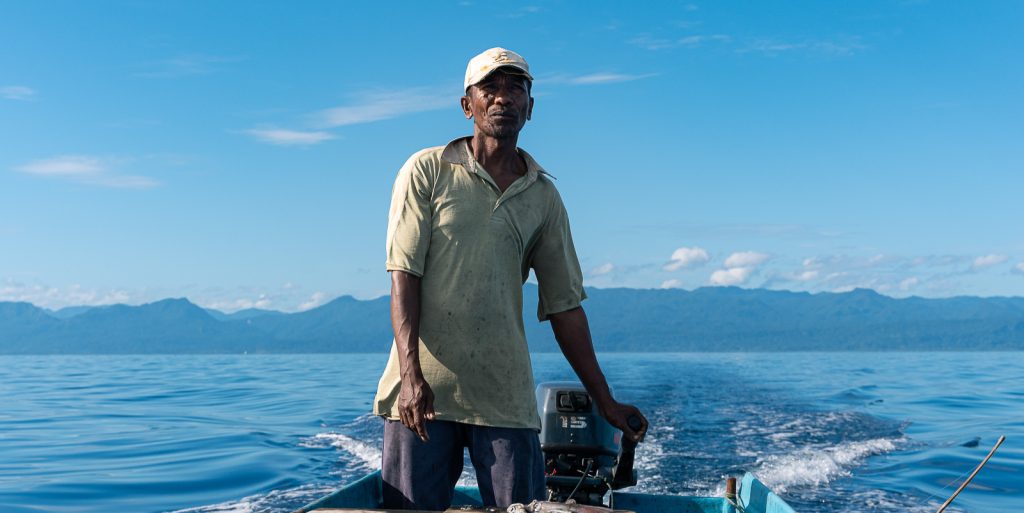
“Arriving in Kawa, Indonesia, late one afternoon was like stepping back in time—save for the plastic litter along the beach. Locals quietly went about their daily routines to the sound of roosters calling. Fires were lit on the beach to help guide the fishers home from their day at sea. We went down to the water’s edge to watch the fishers come in. Unfortunately, catches were meagre; there were only a few skipjacks and no big yellowfin tuna, which was what I had come to see.
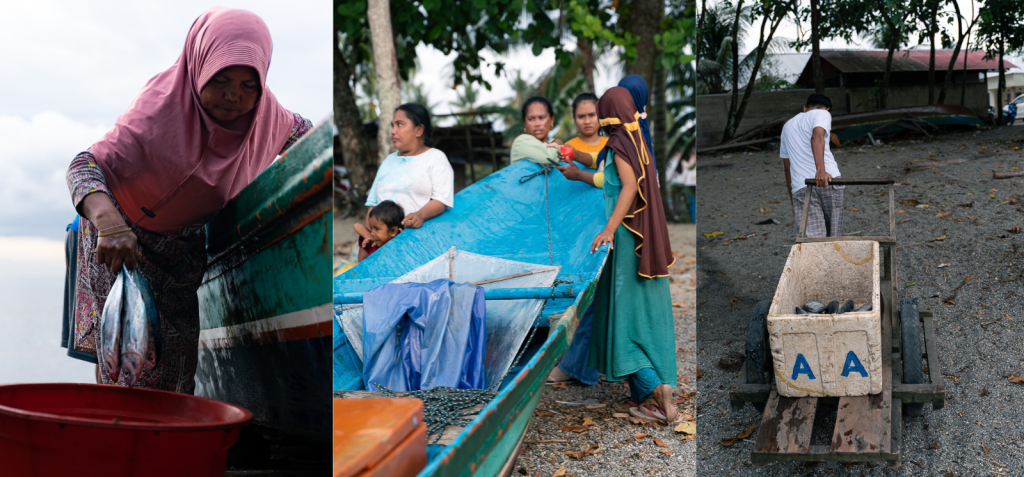
Scenes from the beach in Kawa
We were due to meet our host, Iqbal, at his house to plan the next day’s fishing. Rumours of false killer whales in the area increased the likelihood of a limited catch. Whilst gathered on his patio the group of fishers decided to send one fisher out the next day to assess the conditions. Once that was fixed, we ate a dinner of cassava bread, skipjack, and whole squid while seated on Iqbal’s floor. Being accustomed to my Western lifestyle, the floor proved less forgiving than expected, but perhaps it prepared me for the upcoming day on board the handline fishing vessel. An early night beckoned, as we had to be up at 2 a.m. to head to sea.
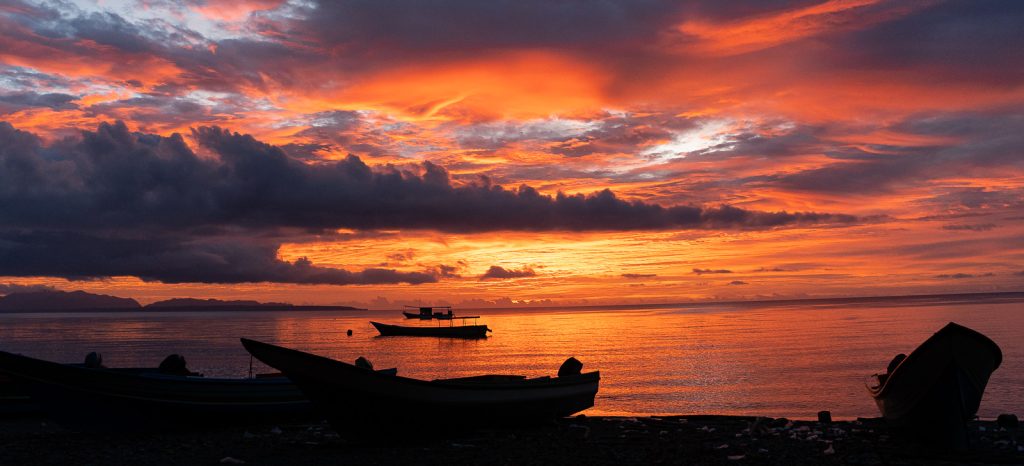
A spectacular Indonesian sunset
The fishing grounds took approximately two hours to reach on perfectly calm seas, and I would be lying if I said I didn’t sleep on the deck for most of the trip. Departing at 2 a.m., we made multiple stops to catch squid to use as bait. Using a glowstick lure, the fisher made easy work, and soon we were fully loaded with a bucket of squid. I managed to film a bit with an improvised ‘video light’ strapped to my camera, which I bought from a local store in town. Fishing is a universal language, much like football or dance, and a conversation of head nods and smiles flowed freely.
As the sun rose, we found some dolphins and began the chase. We kept following them and dropping baited lines in front of the school, but we had no luck at all. I was fascinated by how the fisher used little rocks to sink his bait to the desired depth. He would wrap pieces of squid around a rock to start a chum slick. He took the concept further and even included using the squid ink bag to recreate a stressed squid response.
I eventually became convinced the dolphins were merely playing with us. It was only 8 a.m., and sunburn and heatstroke were becoming realities. I was quickly developing a throbbing headache, which I blamed on the lack of coffee, one of the creature comforts of my desk job at home. After much persistence with this pod of dolphins, the fisher decided to motor further offshore to continue our search.
We managed to locate another pod of dolphins and hooked our first tuna around midday. The fisher had to hold tight as the fish was literally dragging the boat out to sea. After about a thirty-minute fight, the fisher hauled an impressive yellowfin tuna over the gunnel. It was not easy moving around the tiny boat with a large tuna on board, but the fisher and I danced around the tiny vessel in an attempt to capture some unique perspectives on camera. I had to move fast as the fisher gutted, loined, and packed the tuna on ice in under ten minutes. After cleaning the deck and a quick drink, we returned to the dolphins for a second attempt.
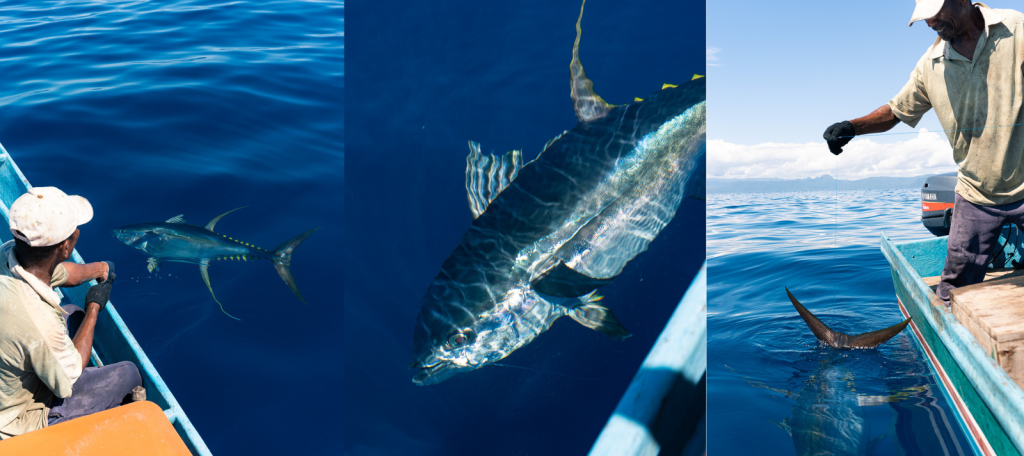
The fisher pulling in a 75kg yellowfin tuna
We soon joined up with several other handline vessels who were also fishing around the pod of dolphins. Almost immediately, we hooked a second fish. After about forty minutes of fighting, I could see the tuna circling about ten meters below the vessel. The water was so clear that all I wanted to do was hop in the water with my camera to get some images under the surface. Unfortunately, even in broken Bahasa or English, the Fisher clearly didn’t want to risk me being in the water. Perhaps he was worried I would lose his fish somehow, but it would have to wait another day. I opted to fly my drone instead. I managed to grab a few shots when I noticed the fisher shouting for me to help haul the second fish over the gunnel. This fight with the second fish had clearly taken its toll on the fisher. After the stressful job of landing a drone on a boat, we were able to haul a sizeable fish on deck. I have nothing but respect for the energy he invests in getting two prized fish on board.

Processing takes place on deck in a matter of minutes.
After another masterclass in loining a fish at sea, I must admit I got nervous that he may want to stay out longer to catch more fish. The sun and heat were inescapable, and no amount of water could quell my headache. With two large fish in the ice box, I was relieved to see that the fisher seemed happy and eager to return home.
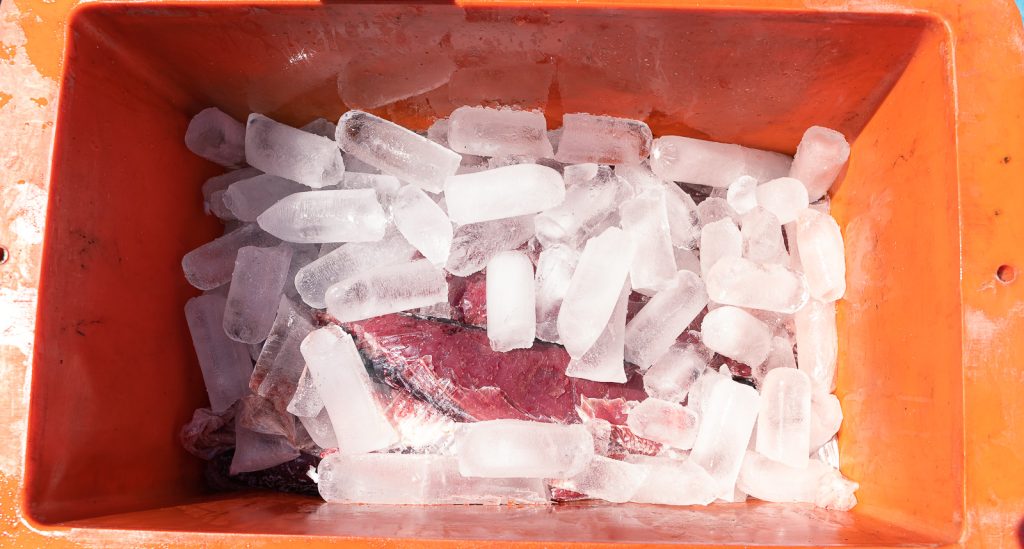
The tuna loins are immediately stored on ice to preserve their quality.
The return trip was a non-stop ride on calm seas that lasted around two hours. I perched myself on the bow and lay back for the ride home. I was tired but couldn’t sleep and reflected on a long fishing day. A journey that started at 2 a.m. concludes with a safe return home the following afternoon, tired but with two beautiful fish to show for it. A more deserving fisher, I don’t think you can find.
It is safe to say that I slept very well that night!”